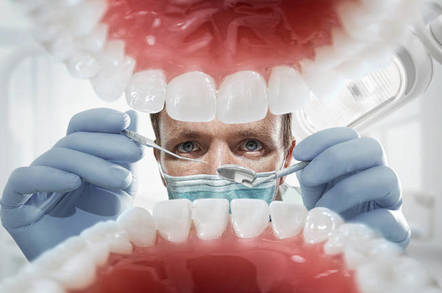
Because of this procedure to perform, there must be enough bone in the mouth, and the bone must be powerful enough to carry and help the enamel implant. When there is insufficient bone, be might need to be added with a treatment called bone augmentation. In addition, organic teeth and promoting tissues near where in fact the implant will soon be put should be in great health. There are lots of factors to displace a missing tooth. A gap between your teeth, if clear when you look or talk, is really a cosmetic concern.
Depending on the location, some missing teeth may possibly affect your speech. A missing molar might not be visible once you talk or grin, but their absence make a difference chewing. Whenever a enamel is lacking, the biting force on the rest of the teeth starts to change. Since the bite changes to pay for the missing tooth, there’s a threat of additional pressure on and discomfort in the jaw joints. If a lost tooth isn’t changed, the surrounding teeth may shift. Harmful plaque and tartar may collect in new hard-to-reach areas produced by the shifting teeth. As time passes, that can result in tooth decay and periodontal disease.
A dental implant is one choice for exchanging a tooth. Implants are designed products that are put surgically in the top of or decrease jaw, wherever they work as anchors for alternative teeth. Implants are constructed of titanium and different components which can be suitable for the human body.
The implant, which is constructed of titanium, is put in the upper or decrease jawbone. The abutment may be made from titanium, silver or porcelain. It’s attached to the implant with a screw. That part links the implant to the crown. The repair (the portion that looks like a tooth) is just a top, generally made of porcelain fused to a metal alloy (PFM), but in addition could possibly be an all-metal or all-porcelain crown. The crown is connected both to the abutment or straight to the implant. It can be screwed or cemented onto the abutment. If the crown is attached to the abutment, the screw gap will soon be protected with restorative product such as for instance tooth-colored stuffing product (composite).
An implant appears and feels like an all natural tooth. It matches securely whenever you chew and speak. A single-tooth implant is a free-standing product and doesn’t require treatment to the adjacent teeth. With a dental implant, the surrounding teeth may stay unmarked if they’re healthy, and their energy and reliability might be maintained. The implant may strengthen your bite and help reduce problems with the jaw.
What Occurs During the Enamel Implant Technique?
Therapy generally is a three-part process that requires a few months. Your dentist might give the treatment, or you might be referred to a consultant – like a periodontist, a prosthodontistor an dental and maxillofacial surgeon – for all or part of the treatment. In the first faltering step, the dentist surgically places the implant in the mouth, with the the top of implant slightly above the the top of bone. A mess is put into the implant to prevent gum tissue and different trash from entering.
The gum then is attached over the implant, where it will remain included for around three to six months whilst the implant fuses with the bone, an activity called “Osseo integration. “There might be some swelling and/or tenderness for a couple days following the surgery, so suffering treatment generally is recommended to alleviate the discomfort. A diet of soft ingredients, cold meals and hot soup usually is preferred through the healing process.
In the next step, the implant is revealed and the dentist attaches an extension, called a “post,” to the implant. The gum structure is allowed to treat round the post. When therapeutic is total, the implant and article will offer as the foundation for the newest tooth. In the last stage, the dentist makes a custom artificial enamel, called a “dental top,” of a size, form, color and fit that will mixture with the other teeth. After done, the crown is attached to the implant post.
